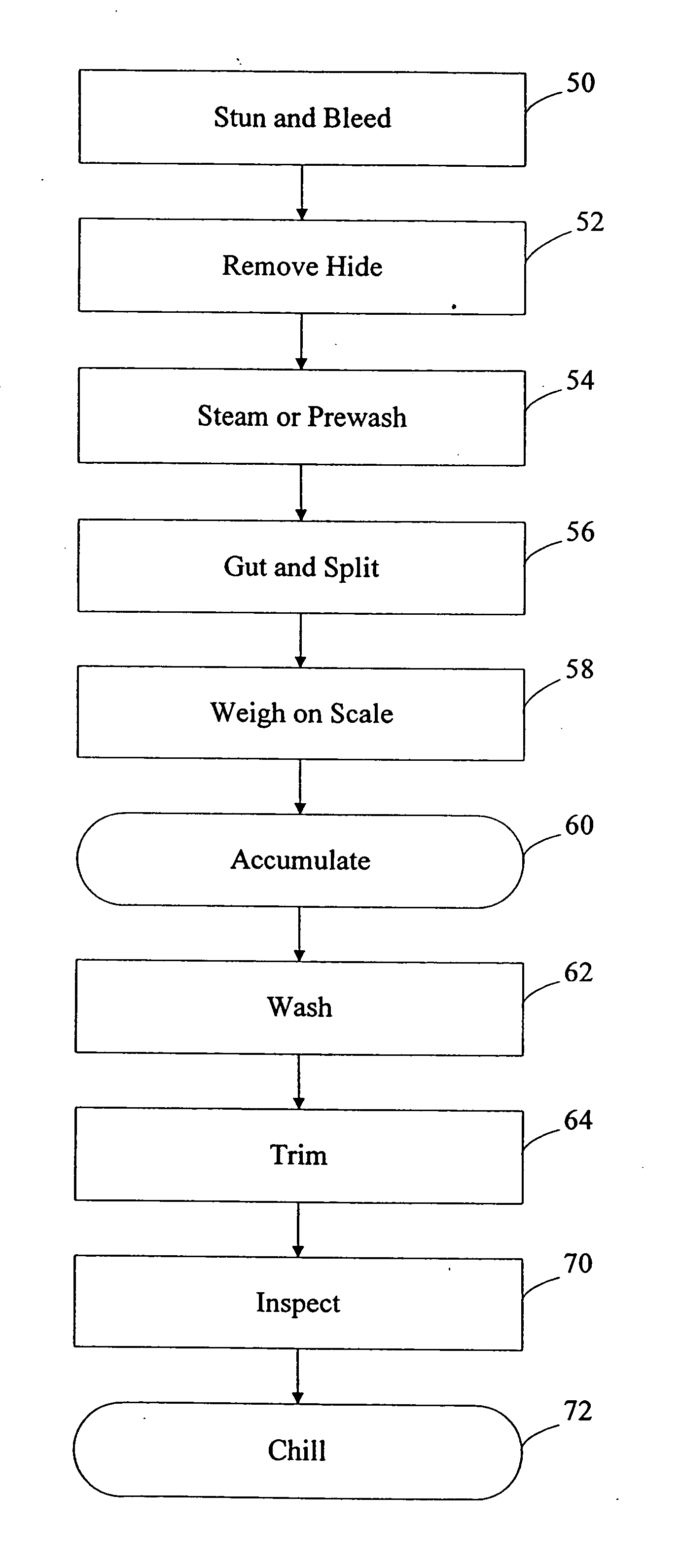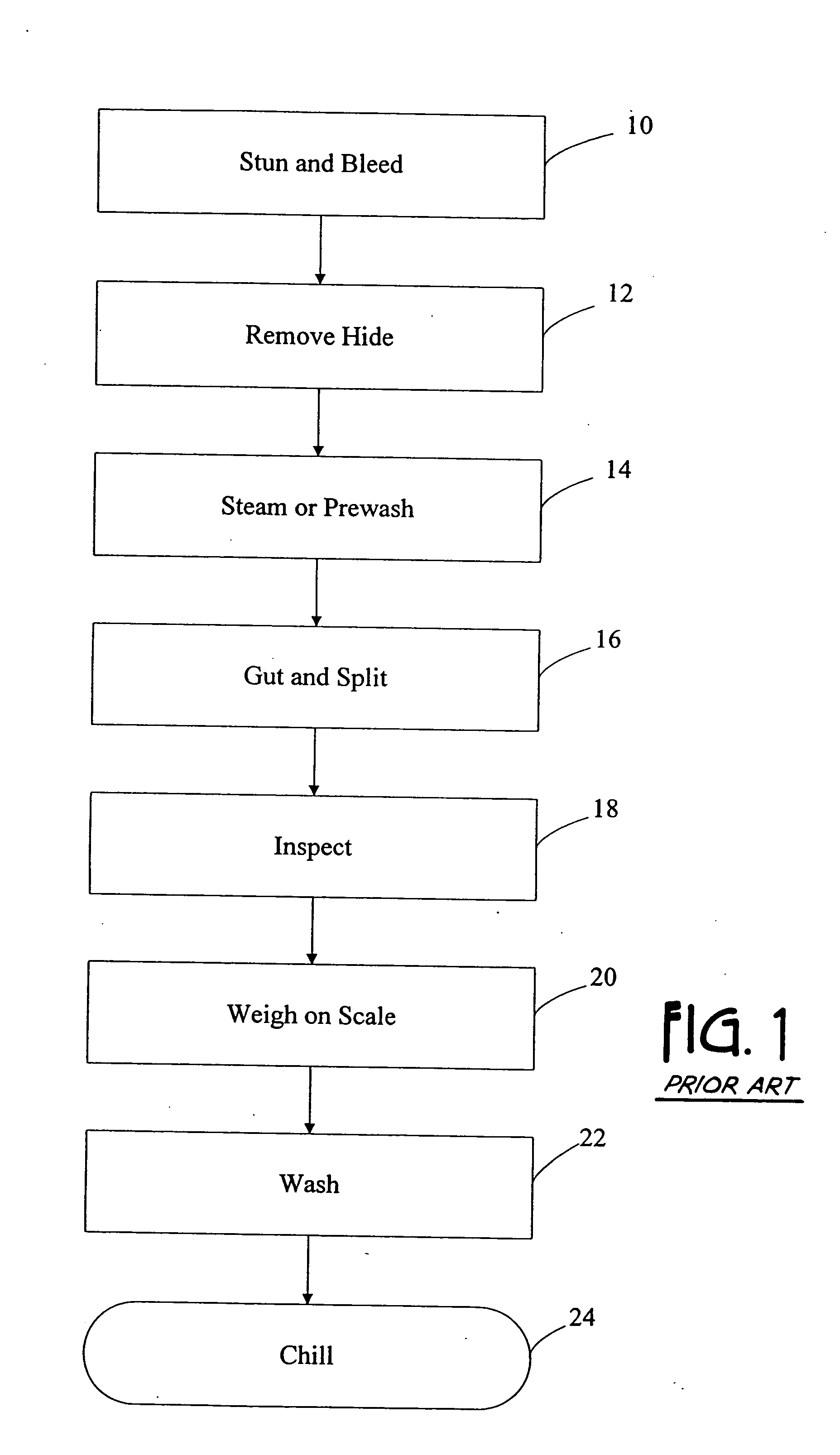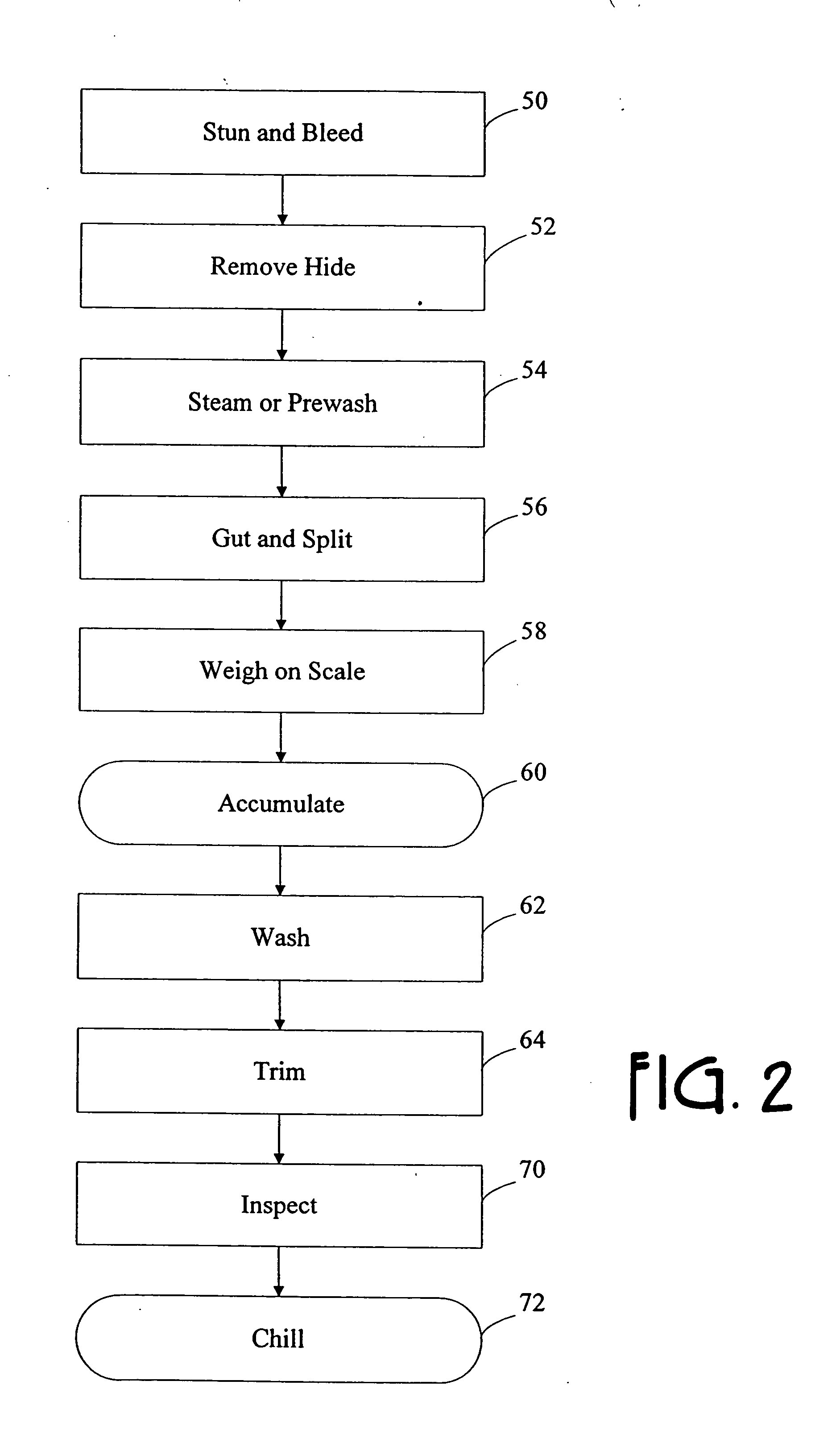Method and apparatus for processing carcasses
a technology of processing method and carcass, which is applied in meat processing plants, poultry processing, butchering, etc., can solve the problems of increasing the microbial contamination of the carcass, affecting the processing rate of the carcass, and creating a barrier to further mechanization and automation of the meat processing lin
- Summary
- Abstract
- Description
- Claims
- Application Information
AI Technical Summary
Problems solved by technology
Method used
Image
Examples
Embodiment Construction
[0028] A. General Overview
[0029] One embodiment of the present invention is a method for processing food, particularly meat. In this embodiment, which is depicted in the flow chart of FIG. 2 and the floor plan of FIG. 6, the invention includes stunning and bleeding the animal (block 50), removing the hide (block 52), steaming or prewashing the carcass (block 54), removing viscera from splitting the carcass (block 56), weighing the carcass (block 58), accumulating the carcass (block 60) at or along the meat processing line, and inspecting the carcass (block 70) at an inspection station following the act of accumulating the carcass. FIG. 2 depicts these acts, and these acts are explained more fully below. Other procedures are, of course, also carried out on a carcass along the meat processing line, and many of these procedures are shown in FIG. 2.
[0030] Typically, meat processing lines are composed of segments of power chains, and the slowing or stopping of one segment of power chai...
PUM
 Login to View More
Login to View More Abstract
Description
Claims
Application Information
 Login to View More
Login to View More - R&D
- Intellectual Property
- Life Sciences
- Materials
- Tech Scout
- Unparalleled Data Quality
- Higher Quality Content
- 60% Fewer Hallucinations
Browse by: Latest US Patents, China's latest patents, Technical Efficacy Thesaurus, Application Domain, Technology Topic, Popular Technical Reports.
© 2025 PatSnap. All rights reserved.Legal|Privacy policy|Modern Slavery Act Transparency Statement|Sitemap|About US| Contact US: help@patsnap.com



